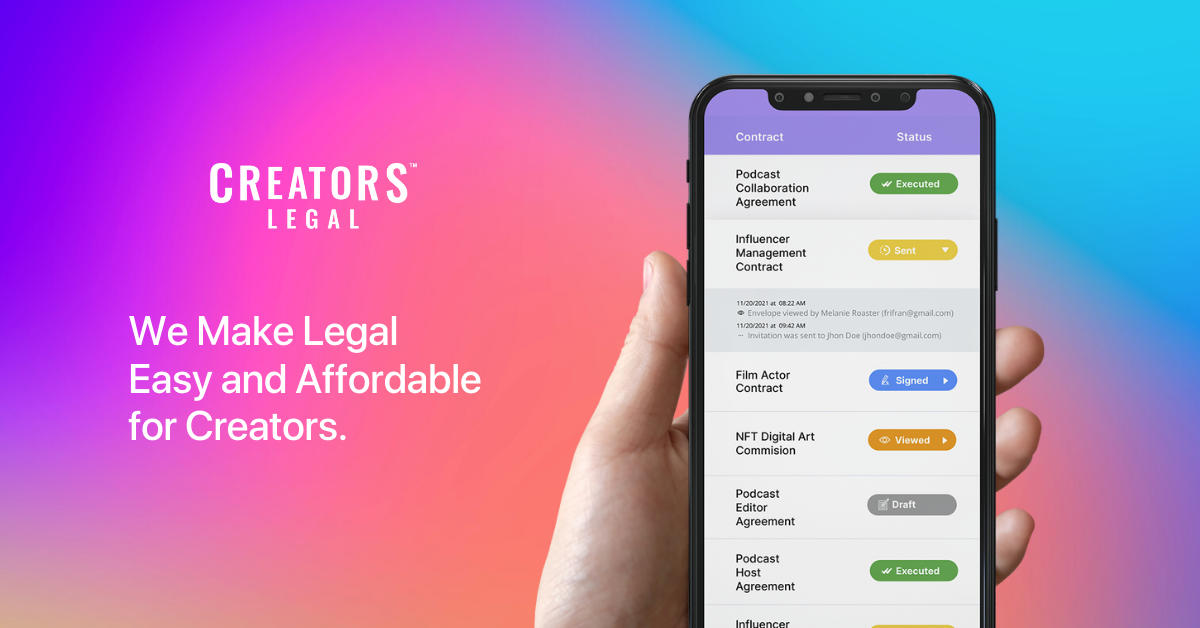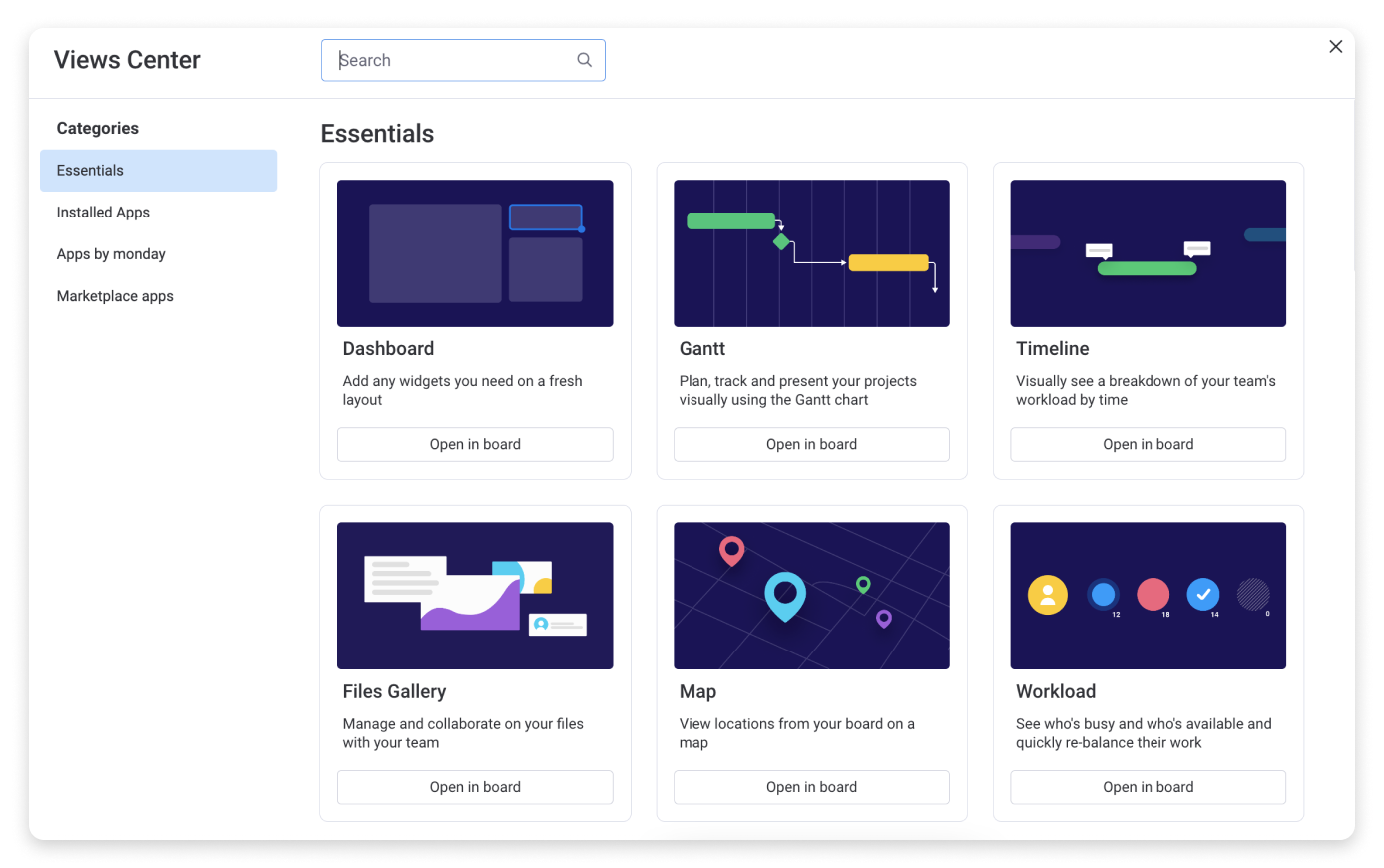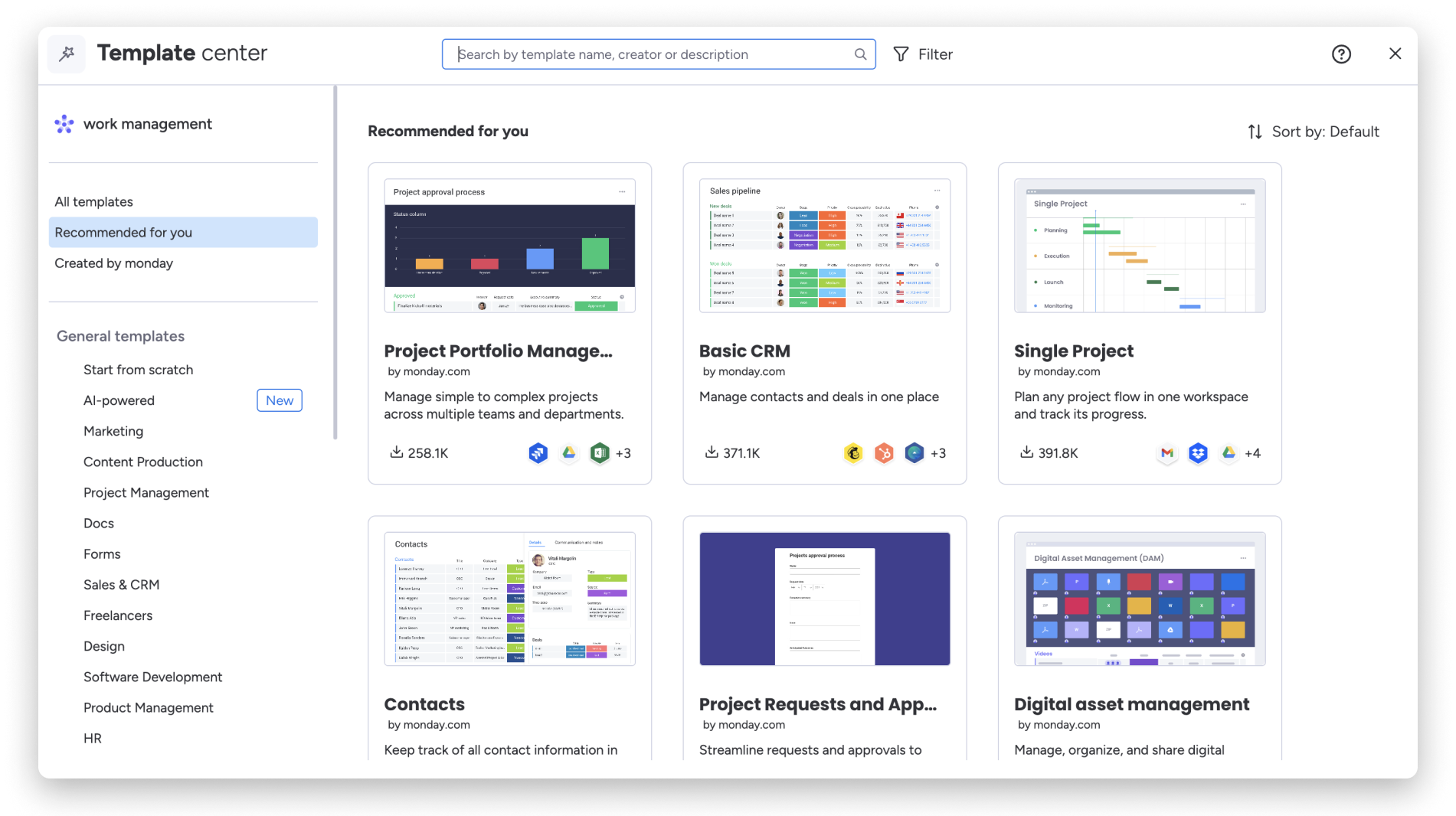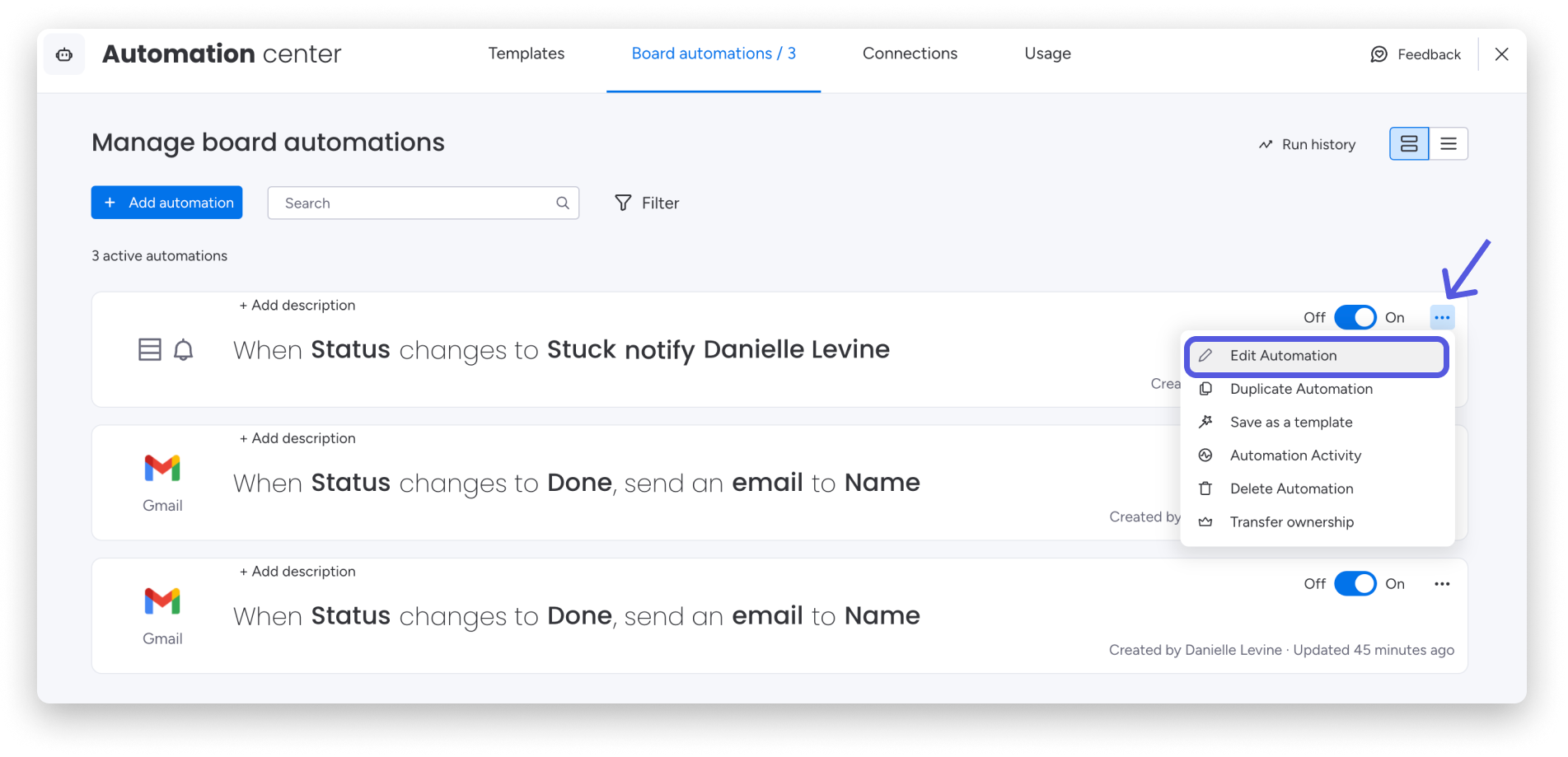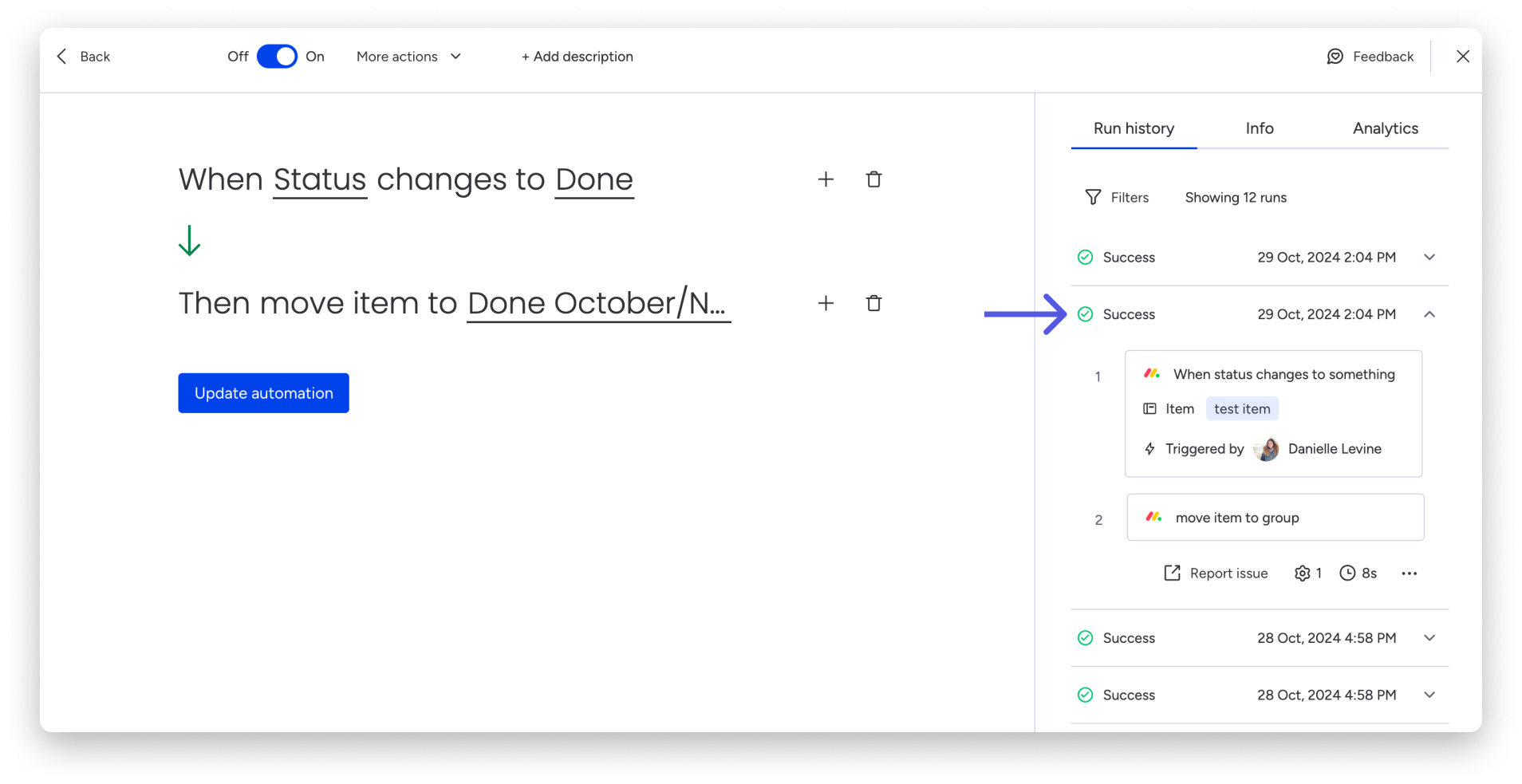The dynamic and often complex world of media production encompasses everything from captivating video and audio experiences to engaging digital campaigns and interactive installations. To ensure success, these activities demand meticulous organization and seamless collaboration. Whether you’re an independent music producer crafting the next chart-topping hit in your home studio, a burgeoning video production house bringing cinematic visions to life, a content creator churning out engaging social media narratives, or a large-scale studio orchestrating intricate film productions, the efficient management of your workflow is paramount to success. The sheer volume of tasks, the diverse skill sets required, the tight deadlines, and the constant need for creative iteration can quickly become overwhelming without optimized workflows and a robust work management system in place.
This article delves into the critical role of project management software in streamlining media production workflows, exploring the challenges faced by production teams across various mediums. We demonstrate how powerful platforms like monday.com and its unique work management model revolutionize the way media projects are planned, executed, and delivered. ultimately fostering creativity, reducing bottlenecks, and maximizing productivity. Feel free to reach out to our team with any questions on media workflows or work management solutions. Be sure to follow us on LinkedIn. Let’s jump into it.
Disclosures: ClearSky 2100 Ventures is an Authorized Partner of monday.com. Additionally, ClearSky 2100 Ventures’ Growth Partner Network partly consists of affiliate partnerships. We may earn a small commission from buying links on our site at no cost to you.
Understanding Media Production
Media production spans multiple disciplines and platforms. For example, video production includes pre-production, principal photography, post-production, and distribution. Music production involves songwriting, recording, mixing, mastering, and distribution. Content creation covers blog posts, social media, graphics, and interactive content.
Platforms range from broadcast television and radio to streaming, social media, podcasts, and VR/AR, each with unique requirements.

The platforms on which media is consumed are equally diverse, ranging from traditional broadcast television and radio to online streaming services, social media platforms (Instagram, TikTok, YouTube), podcasts, and even immersive experiences like virtual and augmented reality. Each platform has its own technical specifications, audience expectations, and distribution requirements, adding further complexity to the production process.
Specific Workflows by Various Media
The specific workflows within media production vary significantly depending on the medium. In music production, the process typically begins with songwriting and arrangement, followed by recording individual instruments and vocals. The mixing stage involves balancing the levels, frequencies, and dynamics of the recorded tracks to create a cohesive sonic landscape. Mastering is the final stage, optimizing the overall sound for distribution across different playback systems. Project management in this context can involve tracking recording sessions, managing audio files, scheduling mixing and mastering engineers, and coordinating feedback rounds with artists and labels.
Video production, as mentioned earlier, follows a more linear but often more complex workflow. More broadly, key activities include
Pre-production, which is crucial for laying the groundwork, involves detailed planning and creative development. The production phase itself can be logistically intensive, requiring coordination of cast, crew, equipment, and locations.
Post-production is where the raw footage is transformed into a polished final product, involving detailed editing, visual effects work, sound design, and color grading. Project management here focuses on scheduling shoots, managing footage, tracking edits and revisions, and ensuring timely delivery of final assets to distributors.
Typical Workflows for Film Production
Diving deeper, the standard film production workflow generally includes three major stages:
Pre-production
- Scriptwriting and storyboarding
- Budgeting and scheduling
- Casting and location scouting
- Creating a shot list and production design
Production
- Setting up the equipment, lighting, and sound
- Shooting the scenes according to the schedule
- Managing the crew and actors on set

Post-production
- Editing the footage
- Adding visual effects, sound design, and color grading
- Finalizing the soundtrack and mixing
- Creating the final cut and distribution materials
Each stage involves collaboration among various teams to ensure the film comes together seamlessly. The inability to complete projects on time often results in increased costs of legal and contractual penalties. Some of these penalties include
- Lost revenue
- Liquidated damages
- Late payment penalties
- Scheduling and coordination with casts and crews with commitment on other projects
- Reputation damage
Content creation for digital platforms often operates on a faster cycle, with a constant need for fresh and engaging content. Workflows can involve brainstorming ideas, creating outlines, drafting content (text, visuals, video), editing and proofreading, scheduling posts, and analyzing performance metrics.
Podcasting: A Rapidly Growing Field
Podcasting remains a rapidly growing field. There are more than 4.3 million podcasts worldwide as of January 2025, with 30,000 launched each year. It’s a market valued at $32.5 billion in 2025 and expected to reach $173 billion by 2032, a 27% CAGR. The market is highly competitive, with publishing speed and content quality keys to success Additionally, many corporate organizations often contract with third-party podcast production companies for podcast creation and management.
Typical Workflows for Podcast Creation
The workflow for commercial podcasts typically involves a series of well-coordinated stages, including
Podcast Concept Development
- Identify the target audience and niche.
- Brainstorm ideas for podcast themes, format, and tone.
- Outline episodes and create a content calendar.
Pre-production
- Scriptwriting or preparing bullet-point talking points.
- Research guests (if applicable) and schedule interviews.
- Plan and gather equipment (microphones, recording software, etc.).
- Test the recording setup for quality and functionality.

Production
- Record each episode, ensuring audio quality meets standards.
- Manage on-air flow and conversation dynamics.
- Backup recordings immediately after each session.
Post-production
- Edit audio for clarity, flow, and removing unwanted sounds.
- Add intros, outros, sound effects, and music tracks.
- Optimize the sound for platforms (normalization, compression, etc.).
Distribution
- Export finalized episodes in the correct format.
- Upload episodes to podcast hosting platforms (e.g., Spotify, Apple Podcasts).
- Write compelling episode descriptions and SEO-friendly titles.
Marketing & Engagement
- Promote episodes on social media, newsletters, and websites.
- Monitor audience engagement through analytics tools.
- Respond to listener feedback and encourage reviews.
Monetization
- Opportunities for sponsorships, partnerships, or product placements.
- Exclusive content or membership programs.
- Advertising opportunities tailored to the audience.
Project management in this domain emphasizes efficient content calendars, streamlined review processes, and the ability to quickly adapt to trending topics and audience feedback across multiple platforms. Regardless of the specific medium, effective project management is essential for maintaining organization, meeting deadlines, and ensuring the final product aligns with the initial vision and client expectations.
How monday.com Addresses Media Production Pain Points
Workflows in media production can be very complex, involving multiple internal and external stakeholders. What are major workflow pain points in media production that create barriers to getting multiple projects completed on time and on budget? Pain points across media production are many and occur often
Pain Points for Media Production Teams
These workflow pain points also impact a range of participants, including Producers, Production Managers, Program Directors, Operations Managers, Production Studio Managers, Traffic Managers. These pain points include
- Constant pressure to deliver work on time, within budget, and to the highest quality standards
- Track of inventory of digital assets and file versions
- Managing unexpected issues, such as equipment failures or creative differences, and finding ways to resolve them in a timely manner
- Collaboration challenges with a wide range of stakeholders, including writers, producers, editors, actors, and internal teams
- Quality control to ensure that the final product meets the highest quality standards and adheres to industry regulations

Pain Points for Creative Teams
These workflow pain points also impact a range of participants, including Creative Managers, Creative Studio Managers , Director of Creative Services, Copy Editors, etc.
- Generating and overseeing the creation of high-quality, engaging content at scale
- Collaboration challenges with a variety of stakeholders and departments — such as programming, production, and marketing — to bring creative concepts to life
- Managing relationships with vendors and suppliers, including contract negotiation and ensuring timely delivery of projects or equipment
- Effective time management to meet demands and deliver high-quality work on time across multiple projects in parallel
Effective Work Management Solution
With the myriad of challenges in the media production landscape, monday.com emerges as a powerful and versatile work management solution. It’s a visual collaboration platform that addresses the many challenges faced by media production teams. The platform provides a visually intuitive interface focused on task management and meeting deadlines while enhancing organizational transparency. More importantly, it provides a centralized hub for managing all aspects of a project, from initial concept to final delivery.
Monday.com is used by over 225,000 companies across 200 industries in more than 200 countries. Additionally, it offers up a broader suite of services to drive efficiency and collaboration across the enterprise, including
- monday work management: Focused on strategy execution, achieving organizational goals through efficient project management and resources.
- monday dev: Enables technology teams to manage sprints, coordinate and accelerate feature releases, and optimize product life cycles.
- monday CRM: Revenue-focused CRM platform to track leads, strengthen deal pipelines, and onboard customers with speed.
- monday service: A scalable platform to handle service operations, tickets, and internal and external requests.
- workcanvas: Enterprise-wide whiteboard solutions to ideate, plan, visualize, and collaborate.
Independently, each solution addresses many enterprise-wide pain points. However, when integrated, organizations can strengthen execution through one shared platform, saving significant time and resources.
monday.com Views and Templates for Media Production Teams
Monday.com’s work management product is designed to drive organizational efficiency, increase collaboration, and boost ROI. Its unique structure consists of
- Boards: Virtual whiteboards where you structure your groups, items, and workflows.
- Groups: Functionality allowing users to combine related items or categories together within the boards.
- Items: Rows that are used to list each component within a group that you want to track. It can be anything, e.g., a task, person, meeting, or expense.
- Columns: A framework to organize each item with the ability to define the data collected within your board. Core columns can include status, text, people, numbers, dates, timelines, tags, etc.
For media production teams, they can create tailored boards to track tasks, assign responsibilities, and set deadlines. Teams can also monitor progress in real-time, fostering transparency and accountability. The platform’s robust communication features, including in-context commenting and direct messaging, facilitate seamless collaboration and ensure that everyone stays informed.
Monday.com’s flexible structure allows teams to customize workflows to match their specific needs, whether it’s a linear video production pipeline or an agile content creation cycle. Features like file sharing and version control help streamline asset management, ensuring that everyone has access to the latest versions of project files.
An Automation Powerhouse
monday Automations are no-code solutions for automating tasks in monday.com. monday Automations automate repetitive tasks, such as sending reminders, status updates, and assigning follow-up tasks, freeing up valuable time for creative work. By providing a single source for all project-related information, monday.com helps to eliminate the inefficiencies associated with fragmented workflows and improves overall project visibility.
monday.com Automations
Addressing Bottleneck for Media Production Teams
For media production teams across all media, monday.com should be an essential part of your company’s tech stack for work management and project management. Through its unique work management structure, teams can,
- Leverage live, customizable dashboards, including widgets to view team workloads, Gantt charts, and various other data visualization tools, to promote data-driven decisions and still leave room to bring your creative vision to life.
- Identify, analyze, and control potential issues and automatically alert relevant stakeholders on time and with all the important information they need for effective mitigation.
- Create standardized approval processes and governance to ensure high-quality and engaging deliverables.
- Manage work and easily communicate with vendors and suppliers in one shared workspace (either as board viewers or collaborators)
Leveraging Monday AI for Media Production
The integration of Artificial Intelligence (AI) within monday.com presents exciting opportunities to further optimize and supercharge media production workflows. In a highly competitive space where time, money, and audience engagement matter, monday’s AI-powered features can automate several time-consuming and often tedious tasks, allowing creative professionals to focus on their core competencies.
At the foundation of monday.com AI solutions are AI Blocks. These are ready-made actions to bring AI into any workflow. Some of the AI actions include summarizing meetings, writing assistant, data extraction, and sentiment analysis.
Monday AI Integration in Boards
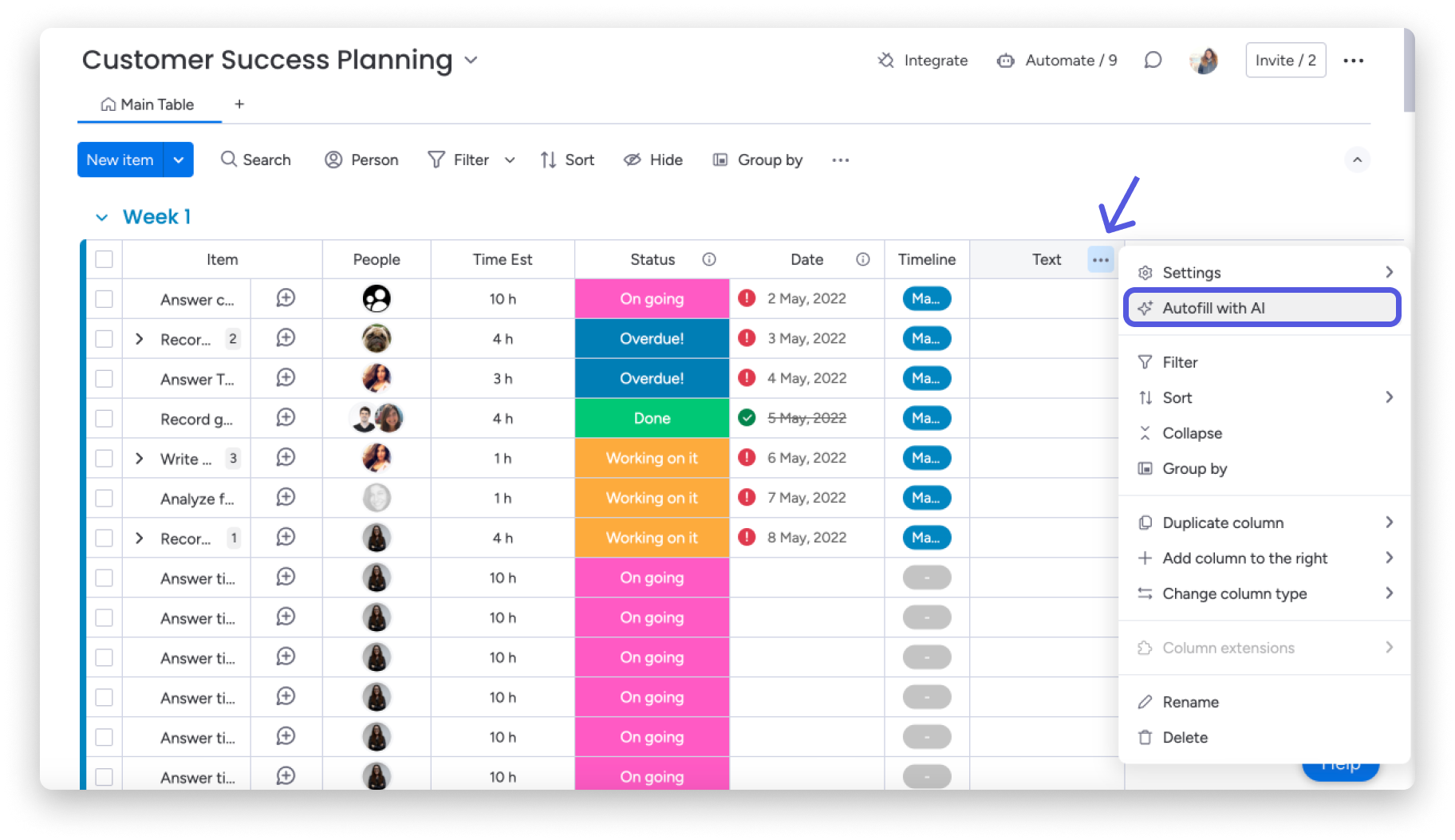
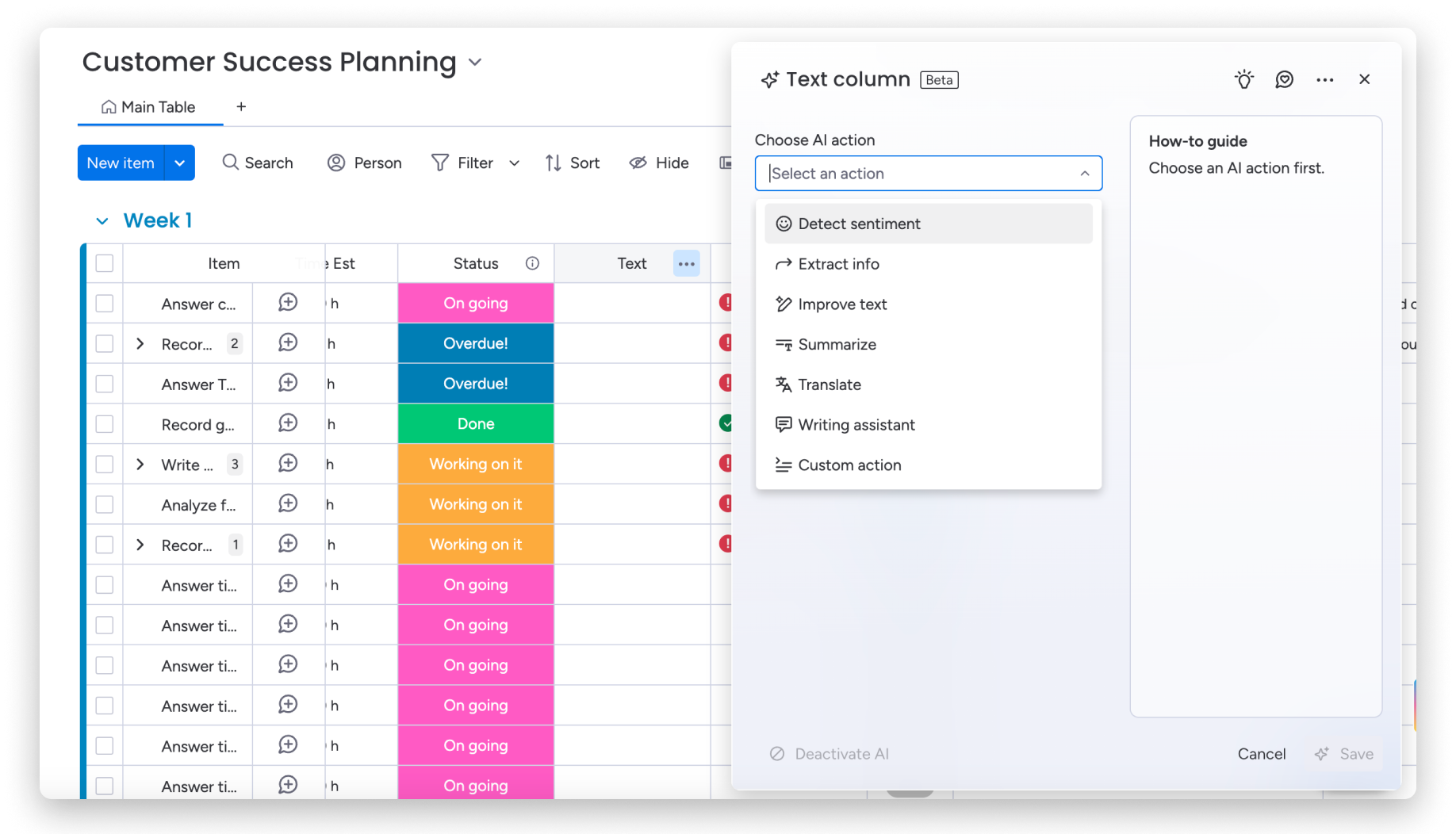
We see three core benefits to the value of monday AI:
- Residing at the Core of Your Business: The AI functionality offers deep contextual integration into your organization’s data. Additionally, functionality is well integrated into the boards, columns, automations, and workflows.
- Stay where you are. With its robust integration, there is no need to leave the platform.
- For everyone: The AI functionality in monday.com is designed for various skill levels, from beginner to expert.
For media and creative teams struggling with workflow management and missed opportunities, monday AI addresses common operational challenges, including
- Manual processes such as copy/paste from multiple sources, e.g., spreadsheets and emails.
- Limited visibility and forecasting
- Inability to make informed strategic decisions
Hallucinations and AI Governance
For many organizations using AI and working with large amounts of information, ensuring data accuracy for decision-making is non-negotiable. This appears to not be an issue with monday AI. Additionally, monday.com continues to make continuous improvements to the platform to enhance the benefits of usage. Recent updates include
- AI Center: Consolidation of all the information relative to AI usage in your organization
- AI Governance: Ability for the organization to monitor AI usage by user and assign roles or permissions.
- Prompt Previews: Dashboard to better understand deployment of AI actions. Parameters include, the AI actions (e.g., assigning labels), output preview,
Is monday AI right for your organization?
monday.com’s foundational capabilities in work management, offers users the ability to design any workflow in any sector. With the deep contextual integration into the organization’s data, monday AI brings new levels of efficiency, saving time, costs, and manpower.

How to Implement Monday.com
Despite the visual intuitiveness of the monday.com user interface, it can seem a bit overwhelming for new users or companies in need of work management solutions. For its user base, it offers a best-in-class knowledge base, help center, and learning academy, which you can access here.
For those seeking to leverage monday.com to its full potential, several options are available. Many firms offer monday implementation services, with specialized consultants ready to assist. These services range from basic monday setup to more comprehensive monday workflow consulting.
Organizations looking for a higher level of expertise may choose to engage a Certified monday.com partner. These partners possess in-depth knowledge of the platform and can provide tailored solutions, including support and managed services.
Once you decide to choose monday.com, smooth data migration is often a critical concern during implementation. monday data migration experts ensure that valuable project data is transferred accurately and efficiently. Certified monday partners can be found in many industries, including financial services, consumer, transportation, media & entertainment, technology, etc., demonstrating the platform’s versatility across different industries.
To ensure a successful transition, companies may opt for monday onboarding services or engage monday specialists to train their teams. The level of support required will vary depending on the complexity of the production workflows and the organization’s in-house technical capabilities. To learn more, get in touch with the team at ClearSky 2100 Ventures to discuss your options.
Embracing Integrated Solutions for Creative Excellence
The fast-paced and demanding world of media production requires efficient project management for success. From independent creators to large studios, communication, task management, asset organization, and scheduling are crucial. Project management software like monday.com offers a solution by providing a centralized, customizable, and collaborative platform. These tools improve communication, streamline workflows, and enhance project visibility, enabling media production teams to overcome obstacles and focus on creating compelling content. Extending to monday’s suite of products, e.g., monday Service, monday CRM, WorkCanvas, etc., creates an uplift to further drive ROI and enhance competitive advantage. The integration of AI further automates and optimizes processes, promising a future where technology enhances innovation, creativity, efficiency, and productivity across the media production landscape.

